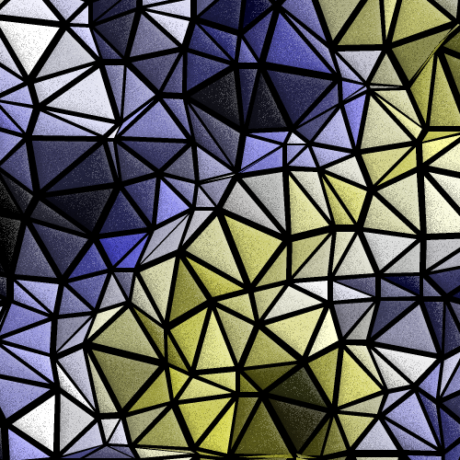|
|
5 years ago | |
|---|---|---|
| .. | ||
| lib | 5 years ago | |
| node_modules | 5 years ago | |
| CHANGELOG.md | 5 years ago | |
| LICENSE | 5 years ago | |
| README.md | 5 years ago | |
| index.js | 5 years ago | |
| options.json | 5 years ago | |
| package.json | 5 years ago | |
| url.js | 5 years ago | |
| useable.js | 5 years ago | |
README.md
Install
npm install style-loader --save-dev
Usage
It's recommended to combine style-loader with the css-loader
component.js
import style from './file.css'
webpack.config.js
{
module: {
rules: [
{
test: /\.css$/,
use: [
{ loader: "style-loader" },
{ loader: "css-loader" }
]
}
]
}
}
Locals (CSS Modules)
When using local scoped CSS the module exports the generated identifiers (locals).
component.js
import style from './file.css'
style.className === "z849f98ca812"
Url
It's also possible to add a URL <link href="path/to/file.css" rel="stylesheet"> instead of inlining the CSS {String} with <style></style> tag.
import url from 'file.css'
webpack.config.js
{
module: {
rules: [
{
test: /\.css$/,
use: [
{ loader: "style-loader/url" },
{ loader: "file-loader" }
]
}
]
}
}
<link rel="stylesheet" href="path/to/file.css">
ℹ️ Source maps and assets referenced with
url: when style loader is used with{ options: { sourceMap: true } }option, the CSS modules will be generated asBlobs, so relative paths don't work (they would be relative tochrome:bloborchrome:devtools). In order for assets to maintain correct paths settingoutput.publicPathproperty of webpack configuration must be set, so that absolute paths are generated. Alternatively you can enable theconvertToAbsoluteUrlsoption mentioned above.
Useable
By convention the Reference Counter API should be bound to .useable.css and the .css should be loaded with basic style-loader usage.(similar to other file types, i.e. .useable.less and .less).
webpack.config.js
{
module: {
rules: [
{
test: /\.css$/,
use: [
{ loader: "style-loader" },
{ loader: "css-loader" },
],
},
{
test: /\.useable\.css$/,
use: [
{
loader: "style-loader/useable"
},
{ loader: "css-loader" },
],
},
],
},
}
Reference Counter API
component.js
import style from './file.css'
style.use(); // = style.ref();
style.unuse(); // = style.unref();
Styles are not added on import/require(), but instead on call to use/ref. Styles are removed from page if unuse/unref is called exactly as often as use/ref.
⚠️ Behavior is undefined when unuse/unref is called more often than use/ref. Don't do that.
Options
| Name | Type | Default | Description |
|---|---|---|---|
hmr |
{Boolean} |
true |
Enable/disable Hot Module Replacement (HMR), if disabled no HMR Code will be added (good for non local development/production) |
base |
{Number} |
true |
Set module ID base (DLLPlugin) |
attrs |
{Object} |
{} |
Add custom attrs to <style></style> |
transform |
{Function} |
false |
Transform/Conditionally load CSS by passing a transform/condition function |
insertAt |
{String|Object} |
bottom |
Inserts <style></style> at the given position |
insertInto |
{String} |
<head> |
Inserts <style></style> into the given position |
singleton |
{Boolean} |
undefined |
Reuses a single <style></style> element, instead of adding/removing individual elements for each required module. |
sourceMap |
{Boolean} |
false |
Enable/Disable Sourcemaps |
convertToAbsoluteUrls |
{Boolean} |
false |
Converts relative URLs to absolute urls, when source maps are enabled |
hmr
Enable/disable Hot Module Replacement (HMR), if disabled no HMR Code will be added. This could be used for non local development and production.
webpack.config.js
{
loader: 'style-loader',
options: {
hmr: false
}
}
base
This setting is primarily used as a workaround for css clashes when using one or more DllPlugin's. base allows you to prevent either the app's css (or DllPlugin2's css) from overwriting DllPlugin1's css by specifying a css module id base which is greater than the range used by DllPlugin1 e.g.:
webpack.dll1.config.js
{
test: /\.css$/,
use: [
'style-loader',
'css-loader'
]
}
webpack.dll2.config.js
{
test: /\.css$/,
use: [
{ loader: 'style-loader', options: { base: 1000 } },
'css-loader'
]
}
webpack.app.config.js
{
test: /\.css$/,
use: [
{ loader: 'style-loader', options: { base: 2000 } },
'css-loader'
]
}
attrs
If defined, style-loader will attach given attributes with their values on <style> / <link> element.
component.js
import style from './file.css'
webpack.config.js
{
test: /\.css$/,
use: [
{ loader: 'style-loader', options: { attrs: { id: 'id' } } }
{ loader: 'css-loader' }
]
}
<style id="id"></style>
Url
component.js
import link from './file.css'
webpack.config.js
{
test: /\.css$/,
use: [
{ loader: 'style-loader/url', options: { attrs: { id: 'id' } } }
{ loader: 'file-loader' }
]
}
transform
A transform is a function that can modify the css just before it is loaded into the page by the style-loader.
This function will be called on the css that is about to be loaded and the return value of the function will be loaded into the page instead of the original css.
If the return value of the transform function is falsy, the css will not be loaded into the page at all.
webpack.config.js
{
loader: 'style-loader',
options: {
transform: 'path/to/transform.js'
}
}
transform.js
module.exports = function (css) {
// Here we can change the original css
const transformed = css.replace('.classNameA', '.classNameB')
return transformed
}
Conditional
webpack.config.js
{
loader: 'style-loader',
options: {
transform: 'path/to/conditional.js'
}
}
conditional.js
module.exports = function (css) {
// If the condition is matched load [and transform] the CSS
if (css.includes('something I want to check')) {
return css;
}
// If a falsy value is returned, the CSS won't be loaded
return false
}
insertAt
By default, the style-loader appends <style> elements to the end of the style target, which is the <head> tag of the page unless specified by insertInto. This will cause CSS created by the loader to take priority over CSS already present in the target. To insert style elements at the beginning of the target, set this query parameter to 'top', e.g
webpack.config.js
{
loader: 'style-loader',
options: {
insertAt: 'top'
}
}
A new <style> element can be inserted before a specific element by passing an object, e.g.
webpack.config.js
{
loader: 'style-loader',
options: {
insertAt: {
before: '#id'
}
}
}
insertInto
By default, the style-loader inserts the <style> elements into the <head> tag of the page. If you want the tags to be inserted somewhere else you can specify a CSS selector for that element here. If you target an IFrame make sure you have sufficient access rights, the styles will be injected into the content document head.
You can also insert the styles into a ShadowRoot, e.g
webpack.config.js
{
loader: 'style-loader',
options: {
insertInto: '#host::shadow>#root'
}
}
singleton
If defined, the style-loader will reuse a single <style></style> element, instead of adding/removing individual elements for each required module.
ℹ️ This option is on by default in IE9, which has strict limitations on the number of style tags allowed on a page. You can enable or disable it with the singleton option.
webpack.config.js
{
loader: 'style-loader',
options: {
singleton: true
}
}
sourceMap
Enable/Disable source map loading
webpack.config.js
{
loader: 'style-loader',
options: {
sourceMap: true
}
}
convertToAbsoluteUrls
If convertToAbsoluteUrls and sourceMaps are both enabled, relative urls will be converted to absolute urls right before the css is injected into the page. This resolves an issue where relative resources fail to load when source maps are enabled. You can enable it with the convertToAbsoluteUrls option.
webpack.config.js
{
loader: 'style-loader',
options: {
sourceMap: true,
convertToAbsoluteUrls: true
}
}
Maintainers

Juho Vepsäläinen |

Joshua Wiens |

Artem Sapegin |

Michael Ciniawsky |

Alexander Krasnoyarov |

Tobias Koppers |

Kees Kluskens |
|||

